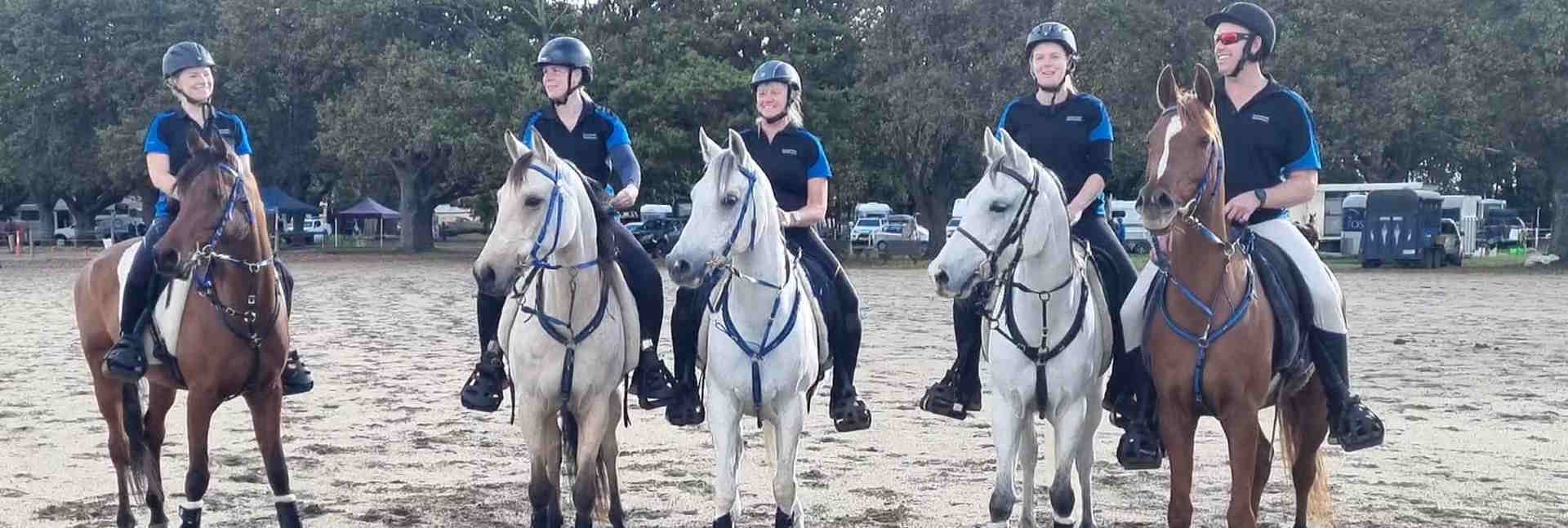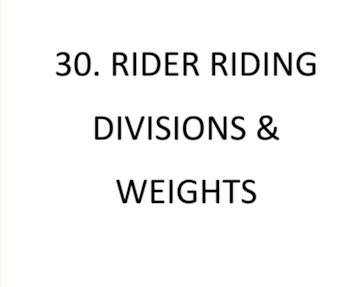Rules made Easy
- Details
LOGBOOK FOR A HORSE
49.2 The initial AERA novice horse logbook application shall:
a) be lodged by a current member of a DA (DA – Division Association, State – VERA)
b) be lodged on the appropriate applicable form as determined from time to time by the AERA
c) be lodged with an AERA horse identification form completed by the applicant or a veterinarian (if the owner/applicant has completed the ID on the initial application a veterinarian must complete an ID document when applying for the update from Novice Horse to open/endurance horse)
d) have all forms completed fully and accurately and accompanied by the appropriate DA fees
e) nominate the name of the horse as registered with a breed society (if appropriate)
f) nominate the name of the current owner of the horse.
49.3 The logbook application shall not be processed by the DA if the:
a) requirements of Clause 49.2 have not been fully and adequately satisfied
b) AERA horse identification form provides insufficient details so as to clearly identify the horse.
- Details
38.1 Riders shall wear:
a) appropriate clothing which presents a smart and professional image for the sport of endurance at all times whilst riding on course, presenting a horse for a veterinary inspection or BC and at the presentation ceremony.
b) the allocated rider bib as the outer most item of clothing. The bib must be clearly visible at all times and shall be worn by the person trotting the horse at all veterinary inspections. (If the strapper is running the horse out at the vet check, they must wear the riders bib/number)
c) A fastened protective equestrian helmet (must be on at all times when mounted) in accordance with the current international equestrian competition standards. (See below for compliance numbers)
38.2 Riders are recommended to utilise caged safety stirrups if flat heeled riding shoes with a heel less than 1cm in depth are being worn. (For people who choose to ride in runners or similar footwear)
(It is recommended that appropriate footwear should be worn be all people who are around horses at a ride, including in the vet ring, leading/grazing horse and strapping, not just the competitors)
- Details
30.1 There are no rider riding divisions in introductory, intermediate, training rides, micro-marathon or mini-marathon rides.
30.2 For endurance and marathon rides, riders shall enter and compete in one riding division only according to Table 14.
Table 14 Rider riding division criteria Riding division Criteria
Heavyweight All-up riding weight of 91 kg or greater
Middleweight All-up riding weight of 73 kg or greater
Lightweight No minimum weight
- Details
AERA RULEBOOK – SECTION 1 - GENERAL RULES
Chapter 5. RIDER RULES 26.
CODE OF CONDUCT
26.1 Every participant is under the control of the chief steward whenever they are present on the ride base or on course.
26.2 Every rider and their support personnel shall conduct themselves at all times:
a) in a courteous, respectful and professional manner, and shall expect reciprocal courtesy, respect and professionalism from other persons with whom they interact, and
b) in a manner so as not to bring the Sport of Endurance into disrepute, and
c) in accordance with the AERA Social Media Engagement Rules.
- Details
47.1 A novice horse which has not been issued with a novice horse logbook may only enter introductory, intermediate or micro-marathon rides. A novice horse entering an endurance ride or mini-marathon ride must have and utilise its novice horse logbook.
47.2 A novice horse shall not enter an endurance ride where the total distance of the ride is longer than 120 km. (Even if the ride is an elevated ride above this distance, you cannot enter)
47.3 A novice horse may only enter:
a) one ride on any particular day
b) a maximum of 2 endurance or mini-marathon rides in any 22-day period
Page 1 of 4










